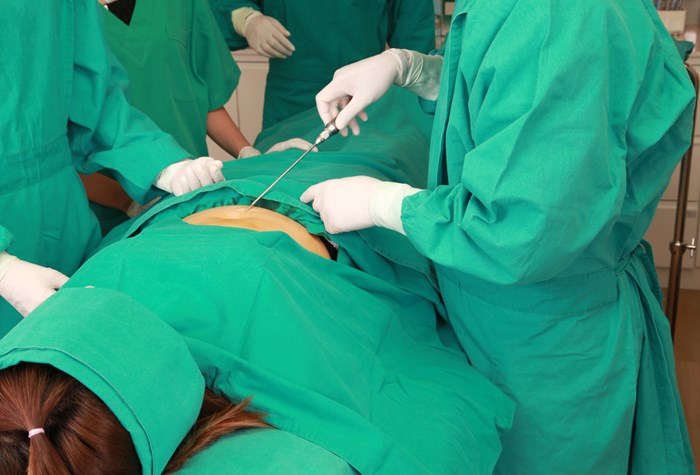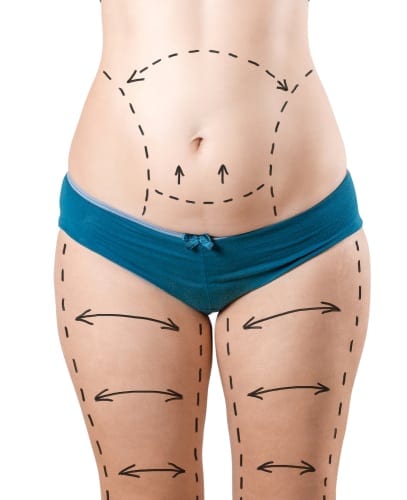The demand for cosmetic surgery has seen a marked increase, with 17.5 million procedures recorded in 2017 alone—a 2% rise from the previous year. Liposuction, one of the most common procedures, accounted for nearly a quarter of a million instances in that period, showing a notable 5% increase from 2016. This growing trend reflects the emphasis many people place on body image and the pursuit of physical aesthetics, particularly in areas resistant to diet and exercise. Liposuction has emerged as a widely embraced procedure that provides individuals with an option for targeted fat removal without significant weight loss, leading to a sculpted, natural appearance. Understanding what liposuction entails, who it’s best suited for, and what the process involves can offer clarity to those considering this option.
What Is Traditional Liposuction?
Liposuction, often called liposculpture, is a surgical procedure used to break down and remove stubborn fat deposits just beneath the skin. It targets specific problem areas—fat that is otherwise resistant to exercise and diet changes. Unlike many weight-loss strategies, liposuction does not aim to reduce overall body weight. Instead, it reshapes and defines localized areas, making it a favored choice among individuals who are near their target weight but have fat deposits that are not responsive to lifestyle changes.
The technique involves a small incision in the skin, through which a thin tube, called a cannula, is inserted to break up and suction out fat cells. The cannula is either attached to a vacuum-like device or a syringe for smaller areas. Liposuction is generally an outpatient procedure, and patients can often return home the same day, even if under general anesthesia.
Common Areas for Liposuction
Fat tends to accumulate in certain parts of the body despite regular exercise, and liposuction can target these notoriously “stubborn” areas. Common regions include the double chin, neck, upper arms, abdomen (or belly pooch), love handles, and the outer thighs. Other popular areas for liposuction are the bra strap area, male and female breasts, and the muffin top. In some cases, patients opt to have less traditional areas treated, such as the ankles, inner thigh, or upper back. Each individual has unique areas where fat persists, which is why surgeons often perform a personalized consultation to determine the most appropriate treatment zones.
Ideal Candidates for Liposuction
Liposuction is not a blanket solution for anyone wanting to lose weight. Rather, it is most suitable for healthy individuals who are close to their ideal weight but have specific problem areas. The best candidates are non-smokers who possess a stable body weight and localized subcutaneous fat—meaning fat just below the skin, as opposed to visceral fat, which lies deeper and surrounds organs. Additionally, individuals with good skin elasticity tend to achieve better results, as the skin adapts better to the new contours. Those with loose skin or significant cellulite might experience an uneven or dimpled appearance post-procedure, making them less ideal candidates.

Understanding the Limits: Is Liposuction a Weight Loss Solution?
One common misconception about liposuction is that it is a means to lose weight. Instead, it is a fat reduction technique that targets localized pockets of fat. Surgeons emphasize that it does not significantly impact the scale, and those seeking dramatic weight loss results should consider alternative methods. The amount of fat that can be removed in a single area varies based on factors like the patient’s health, the surgeon’s judgment, and the patient’s specific aesthetic goals. While the fat removed is permanent, maintaining results requires a balanced diet and regular exercise, as new fat cells can form if there’s weight gain.
Preparing for Liposuction
Preparation is essential to ensure the best outcome and to minimize any risk. In the days leading up to surgery, the surgeon may require the patient to temporarily stop medications, particularly blood thinners or aspirin, to reduce bleeding risks. Blood tests may also be conducted to confirm suitability for anesthesia. On the day of the surgery, the patient typically undergoes fasting for about 12 hours to ensure the body is prepared for anesthesia. It is also advised to enlist a friend or family member to assist with transport and postsurgical care, as patients are usually unable to drive or perform strenuous activities immediately following surgery.
The Liposuction Procedure
During liposuction, the surgeon creates small incisions in the target area, then inserts the cannula, which loosens fat cells and suctions them out. This process is generally performed under general anesthesia, though some cases may use local anesthesia for smaller treatment areas. Liposuction is considered a relatively short procedure, and depending on the area being treated, it may last anywhere from one to three hours.
Recovery and Aftercare
Recovery from liposuction is often quick, with many patients able to return to work within a few days. Full activity, such as exercise, is generally resumed in 2-4 weeks, though the time may vary depending on the area treated and the extent of fat removed. Patients can expect some swelling, bruising, and tenderness post-surgery. Pain can be managed with prescribed medications, and many surgeons recommend compression garments, which help control swelling and aid in shaping the treated areas. Following instructions and adopting healthy habits like adequate hydration, rest, and avoiding smoking can aid in a smoother, faster recovery with minimal complications.
Expected Scarring
Due to the small size of the cannula used in liposuction, scars are generally minimal. However, the number and placement of scars depend on the target area and the number of entry points required to address it fully. Scarring may also vary according to the patient’s skin quality and healing capacity, which the surgeon usually discusses beforehand.
Achieving Long-Term Results
While immediate results may be obscured by swelling and some looseness in the skin, final outcomes typically become visible several weeks to months post-surgery. Because liposuction permanently removes fat cells, the results can last long-term, provided that the patient maintains a balanced diet and exercise routine to prevent the formation of new fat cells in other body areas.

Questions to Ask a Plastic Surgeon
Selecting the right surgeon is crucial to achieving satisfying and safe results. Prospective patients should ask these questions to assess a surgeon’s qualifications, experience, and compatibility with their aesthetic goals:
- Are you board-certified by the American Board of Plastic Surgery?
This certification ensures that the surgeon has the necessary experience and meets stringent standards in various plastic surgery procedures. - How experienced are you with liposuction?
Inquiring about the surgeon’s familiarity with specific body areas can provide insight into their expertise. - What kind of results can I expect?
Each patient’s outcome will vary, and a realistic discussion with the surgeon about anticipated results can set accurate expectations. - What is the recovery process and timeline?
Recovery time differs based on fat amount, target area, and the patient’s body, so understanding the specifics is key. - Do you have before and after photos?
Reviewing photos of similar procedures helps set realistic expectations and demonstrates the surgeon’s capabilities. - How long is the typical scheduling wait before surgery?
Some surgeons may be booked months out, so planning around any upcoming events is essential. - What are the costs, and is financing available?
Liposuction costs vary by region and surgeon. Financing options can help patients plan and budget accordingly. - What are the post-care requirements?
Post-surgical instructions often include wearing compression garments and modifying physical activities, ensuring proper healing and optimal results. - Can liposuction be combined with other surgeries?
Certain cases, like mommy makeovers, may benefit from combining liposuction with other procedures, such as a tummy tuck, for enhanced results. - Is there a need for follow-up visits?
Post-surgical checkups can help confirm that healing is on track. The surgeon should clarify the expected number and frequency of follow-ups.
Conclusion
Liposuction remains a popular and accessible option for individuals looking to refine specific body areas. While not a weight-loss solution, this procedure effectively addresses areas resistant to other methods. Armed with knowledge about what to expect, who makes an ideal candidate, and essential questions to ask a surgeon, patients can approach the liposuction process with confidence, ensuring they receive the best care and results that align with their body goals. With an informed choice and a proactive post-surgery lifestyle, liposuction offers a path to a sculpted, natural, and lasting physique.
Sources
- https://my.clevelandclinic.org/health/treatments/11009-liposuction
- https://www.plasticsurgery.org/news/blog/liposuction-10-things-to-know-and-10-questions-to-ask




